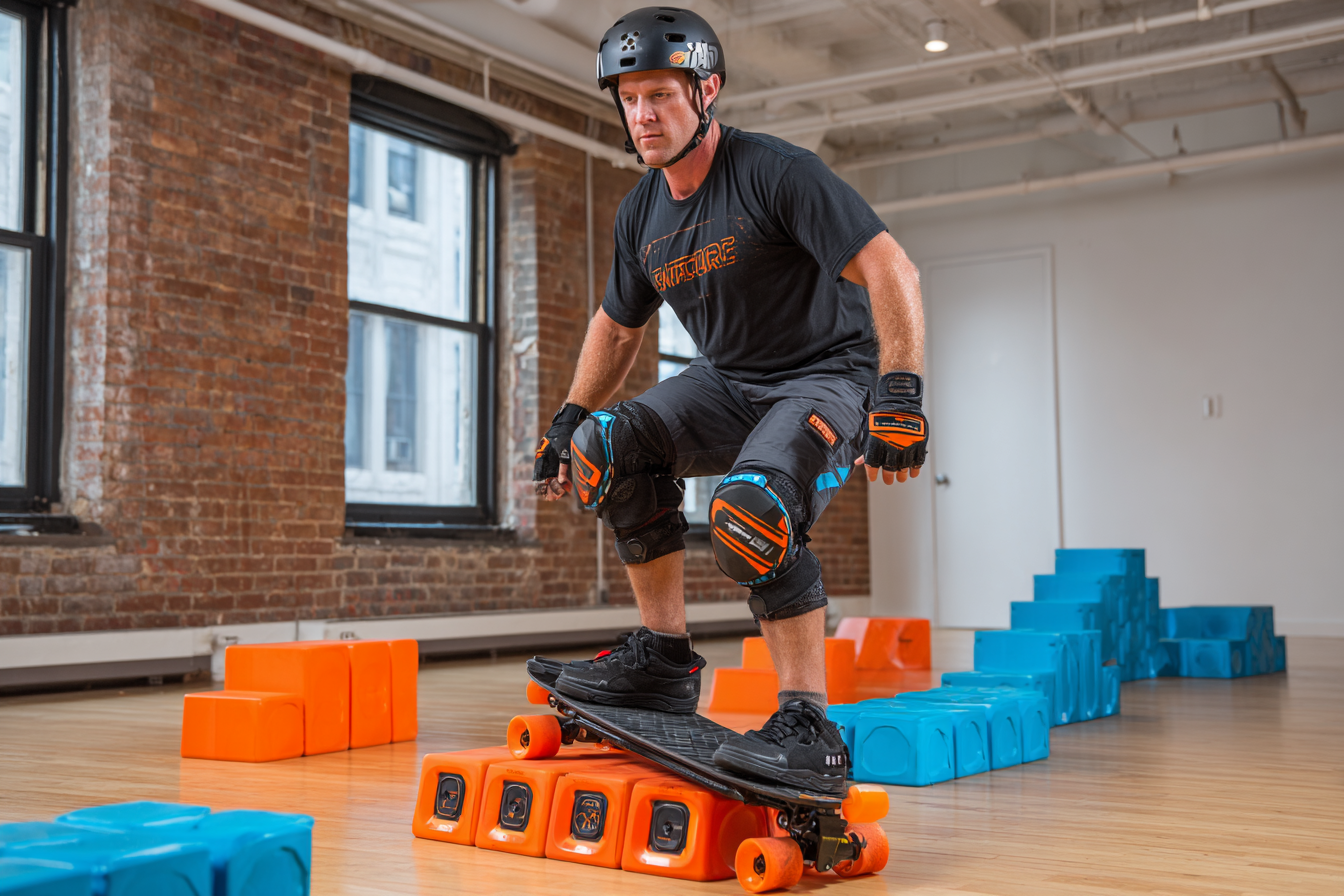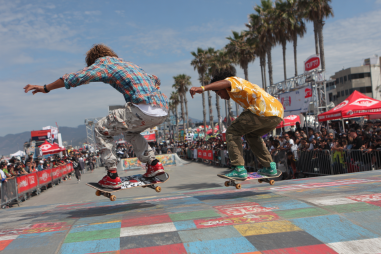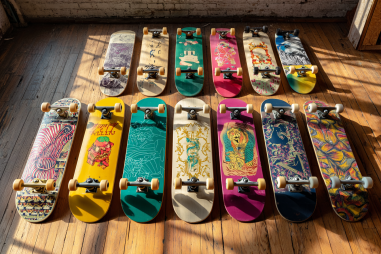Skateboarding is an exciting and dynamic sport that offers endless fun and a great way to stay active. However, like any physical activity, it comes with its share of risks. Injuries can quickly sideline even the most dedicated skateboarders, impacting progress and enjoyment. The good news is that many of these injuries can be prevented with the right exercises designed to strengthen vulnerable areas of the body and improve balance and coordination. In this article, we’ll explore the most effective skateboarding injury prevention exercises to help you stay safe and skate longer.
Common Injuries in Skateboarding and Their Causes
Understanding the types of injuries most skateboarders experience is the first step in prevention. The most common injuries include wrist fractures, ankle sprains, knee injuries, and contusions or bruises. These injuries typically result from falls, collisions, or performing tricks without proper technique or preparation.
Wrist injuries often occur when skateboarders instinctively use their hands to break a fall. Ankles can twist or roll during landings or when navigating uneven surfaces, leading to sprains or strains. Knees take a lot of impact from jumps and sudden stops, making them susceptible to ligament tears or inflammation. Recognizing these common injury sites helps focus your exercise routine to target these vulnerable areas.
Benefits of Injury Prevention Exercises
Incorporating injury prevention exercises into your skateboarding routine is a proactive way to minimize risk. These exercises not only help strengthen muscles and joints that are most susceptible to injury but also improve balance, flexibility, and proprioception—your body’s ability to sense movement and position in space.
Regularly performing targeted exercises can increase your resilience against injuries, allowing you to recover faster if you do take a tumble. Furthermore, developing strength and stability in key areas translates into enhanced performance, better control, and confidence while skating.
Strengthening Exercises for Wrists, Ankles, and Knees
Let’s break down some effective exercises focused on strengthening the wrists, ankles, and knees—three critical areas for skateboarders.
Wrist Strengthening Exercises
- Wrist curls: Use a light dumbbell or resistance band. Sit with your forearm on your thigh or a flat surface, palm facing up. Slowly curl your wrist upwards and then lower it back down with control.
- Reverse wrist curls: Similar setup but with the palm facing down. This targets the extensor muscles of the wrist.
- Wrist rotations: Extend your arm and rotate your wrist clockwise and counterclockwise to improve flexibility and strength.
- Grip strengtheners: Use a stress ball or grip strength tool to build the muscles around your wrists and forearms.
Ankle Strengthening Exercises
- Calf raises: Stand on the edge of a step or flat ground, rise up on your toes, hold briefly, then lower back down. This builds calf muscle strength to support ankle stability.
- Ankle circles: Sit or stand and lift one foot slightly off the ground. Rotate the ankle slowly in circles in both directions.
- Resistance band ankle dorsiflexion and plantarflexion: Use a resistance band to push your foot down and pull it up against resistance, strengthening the muscles around the ankle.
- Balance exercises: Stand on one foot, gradually increasing your duration to improve ankle stability.
Knee Strengthening Exercises
- Squats: Perform bodyweight squats with proper form, ensuring your knees stay aligned with your toes. This strengthens the quadriceps, hamstrings, and glute muscles that support the knee.
- Lunges: Forward or walking lunges help develop balance and knee stability by engaging multiple muscles around the joint.
- Step-ups: Step onto a sturdy platform with one foot, then bring the other foot up. Step back down and repeat. This improves knee control during dynamic movements.
- Leg extensions and hamstring curls: These can be done with bands or machines to target the muscles around the knee, but bodyweight versions like bridges are also effective.
Balance and Proprioception Drills
Good balance and proprioception are essential for preventing falls and recovering quickly when you stumble on your skateboard. Incorporating balance drills into your training can enhance your body awareness and coordination.
- Bosu ball exercises: Standing or squatting on a Bosu ball challenges your balance and engages stabilizing muscles.
- Single-leg stands: Simply standing on one leg while keeping your core engaged and eyes forward increases balance over time.
- Walk heel-to-toe: Take slow steps, placing the heel of one foot directly in front of the toes of the other to encourage control and steadiness.
- Dynamic balance with movement: Incorporate slow turns, head movements, or arm reaches while balancing on one leg to simulate real-world skateboarding demands.
Warm-up and Cool-down Best Practices
Effective warm-ups and cool-downs can significantly lower your risk of injury and improve your skating performance.
Before hitting the skate park, spend 5-10 minutes warming up with light aerobic activity such as jogging or jumping jacks. Follow this with dynamic stretches like leg swings, arm circles, and gentle twists to increase blood flow to muscles and joints.
After skating, cool down with slower movements and static stretching. Focus on muscles and areas that feel tight, such as calves, hamstrings, wrists, and shoulders. Cooling down helps reduce soreness and supports recovery.
How to Spot Early Signs of Injury
Recognizing the early warning signs of injury is critical to preventing more serious problems. Pay attention to any persistent pain, swelling, stiffness, or reduced range of motion in your wrists, ankles, knees, or other areas after skating.
Other signs include warmth around a joint, bruising, or instability when walking or moving. If you notice these symptoms, give your body time to rest and recover, and consider consulting a healthcare professional if they persist.
Integrating Injury Prevention Into Your Skate Routine
Consistency is key when it comes to injury prevention. Make your strengthening and balance exercises part of your regular skateboarding practice. Aim for at least 3 sessions per week, dedicating 15-30 minutes to targeted exercises.
Consider warming up immediately before skating and cooling down right after. This integration ensures your body is prepared for activity and supported during recovery.
Additionally, listen to your body. If you feel fatigued or notice any discomfort, adjust your routine to allow more rest or modify exercises accordingly.
Keep Your Body Skate-Ready for the Long Haul
Skateboarding is as much about fun as it is about skill and resilience. By incorporating targeted injury prevention exercises, warming up properly, and paying attention to your body’s signals, you can keep injuries at bay. Strengthening your wrists, ankles, and knees, enhancing your balance, and maintaining flexibility will not only protect you but also improve your performance and confidence on the board. Stay proactive, stay consistent, and most importantly, enjoy skating for years to come.







